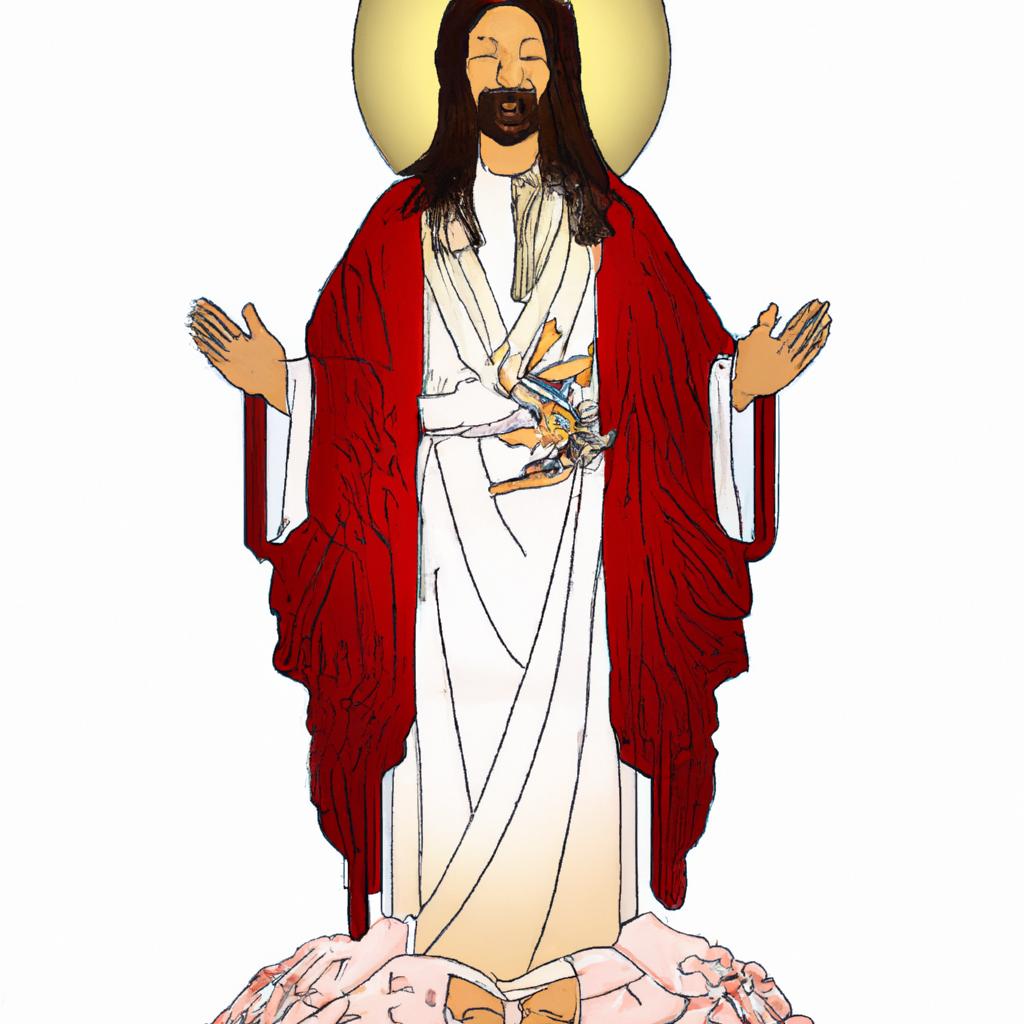Discover the history, representations, controversies, and legacy of the japanese jesus concept. Explore the intersection of religion and culture in Japan.
The concept of Japanese Jesus has captivated scholars and enthusiasts for decades. It represents the unique portrayal of Jesus in Japanese culture, an evolution that spans centuries since the arrival of Christianity in Japan. In this article, we delve into the historical background, representations, controversies, and lasting legacy of the Japanese Jesus concept.
Historical Background
Christianity first reached Japan in the 16th century through Jesuit missionaries, who received a warm reception from the ruling class. The religion rapidly spread, with an estimated 300,000 converts by the early 17th century. However, the Tokugawa Shogunate, which took power in 1603, perceived Christianity as a threat and imposed a ban. This ban triggered a period of persecution during which thousands of Christians were martyred.
Despite the ban, Christianity persisted in secret, with some Japanese continuing to practice their faith. In the mid-19th century, Japan was forced to open its ports to foreign trade, leading to the return of Christianity. The Meiji Restoration of 1868 marked the end of the ban, allowing Christianity to be openly practiced once again. Presently, Christianity remains a minority religion in Japan, with less than 1% of the population identifying as Christian.
The Jesuit missionaries not only brought Christianity but also introduced Western art and culture to Japan, significantly influencing Japanese artistic and cultural expressions. This influence can be observed in the representation of Jesus in Japanese art and literature.
Japanese Representations of Jesus
Japanese artists have crafted unique depictions of Jesus that incorporate Japanese culture and values. One prominent representation is the “Maria Kannon” or “Maria Bodhisattva,” which portrays Mary holding the infant Jesus in the style of a Buddhist bodhisattva. Another remarkable depiction is the “Hidden Christian” art created by Japanese Christians in secret during the Edo period. These artworks often feature Jesus and other Christian figures donning traditional Japanese attire and engaging in Japanese cultural practices.
Japanese popular culture has also embraced the portrayal of Jesus. Anime, manga, and video games have showcased Jesus with a distinct interpretation of his teachings. For instance, the anime series “Neon Genesis Evangelion” incorporates Christian themes and imagery, presenting a unique perspective.
Japanese Christians have developed their own interpretation of Jesus’ teachings, heavily influenced by Japanese culture and values. The concept of “amae” or “sweet dependency” has been intertwined with the Christian concept of “grace,” resulting in a unique understanding of God’s love and forgiveness.
To fully appreciate the representation of Jesus in Japanese culture, it is essential to explore the controversies surrounding this concept and its lasting impact.
The Controversy Surrounding Japanese Jesus
The concept of Japanese Jesus has sparked both support and criticism. Critics argue that the portrayal of Jesus in Japanese art and culture is disrespectful and diminishes the significance of his teachings. They assert that Jesus is a historical figure whose life and teachings should be respected without alteration for cultural or artistic purposes.
On the other hand, proponents of Japanese Jesus view it as a positive development, highlighting the distinctive cultural context in which Christianity has flourished in Japan. They believe that these representations provide new perspectives on Jesus’ life and teachings, making Christianity more accessible to the Japanese people.
The use of Jesus in Japanese popular culture has also faced opposition from those who find it inappropriate and disrespectful. These critics believe that Jesus should be treated with reverence and not used for entertainment purposes.
In response, supporters argue that these pop culture portrayals of Jesus aim to explore his teachings in a contemporary context rather than disrespect him. They believe that incorporating Jesus into popular culture can make his teachings more relatable to young people and inspire them to explore their own faith.
The Legacy of Japanese Jesus
The concept of Japanese Jesus has left an indelible mark on Japanese society and culture. It has played a pivotal role in shaping the perception of Christianity and has influenced the artistic and cultural landscape of the country.
Art has been one of the avenues through which Japanese Jesus has made a profound impact. The unique representations of Jesus in Japanese art have become an integral part of the country’s cultural heritage, appreciated not only by Christians but also by non-Christians who admire their aesthetic and cultural value.
Japanese Jesus has also influenced popular culture, particularly anime and manga. These media have introduced a more accessible Jesus to younger generations unfamiliar with Christianity.
Despite being a minority religion, Christianity holds significance in Japanese society, and the concept of Japanese Jesus has bridged the gap between Christianity and Japanese culture. The portrayal of Jesus in Japanese culture has made him more relatable to the Japanese people, cultivating a vibrant and distinctive Christian community in Japan.
Conclusion
In conclusion, the concept of Japanese Jesus symbolizes the convergence of religion and culture in Japan. The unique representation of Jesus in Japanese art, literature, and popular culture has deeply influenced Japanese society, fostering connections between Christianity and Japanese culture.
The enduring popularity of Japanese Jesus underscores its significance in Japanese culture. It has contributed to the emergence of a vibrant Christian community in Japan, enriched by both Western and Japanese artistic and cultural influences.
In our interconnected world, the concept of Japanese Jesus remains relevant, emphasizing the value of cultural exchange and understanding. By appreciating the distinctive representation of Jesus in Japanese culture, we deepen our understanding of the interplay between religion, culture, and the transformative power of art.
To learn more about TooLacks, visit TooLacks.



